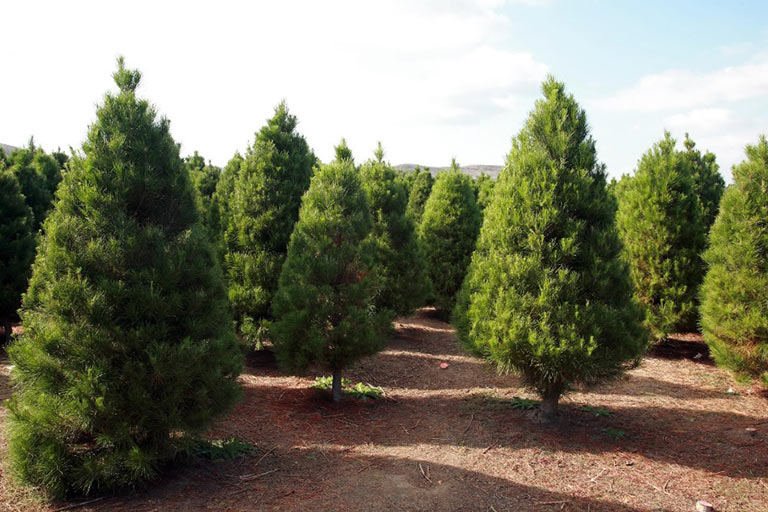Buying a tree from a farm can be an exciting addition to your landscape, but it’s essential to approach the process with careful planning. Good-looking trees are in demand, and the interest in them is driven by the desire to have a tree that is uniquely theirs (Collins et al., 1975).
Choosing the right tree involves more than just picking a species you like; it requires understanding your needs, researching local farms, and ensuring you select healthy, well-cared-for plants. By following these essential steps before making your purchase, you can set yourself up for success and enjoy the beauty and benefits of your new tree for years to come.
Step 1. Understand Your Needs
Before heading to a tree farm, it’s crucial to define your specific needs for purchasing a tree. This step will help narrow down your options and ensure you select the best tree for your situation.
- Define the Purpose of Your Purchase
Consider why you want to buy a tree. Are you looking to enhance your landscape’s aesthetics, provide shade, create privacy, or attract wildlife? Understanding the primary function of the tree will guide your selection process and help you make an informed choice.
- Identify Suitable Tree Species
Not all trees thrive in every environment. Research which species are well-suited for your climate, soil type, and available sunlight. For example, some trees prefer full sun, while others thrive in partial shade. Native species are often a safe choice, as they are adapted to local conditions and require less maintenance.
- Consider Size and Growth Potential
Take into account the mature size of the tree. Will it fit well in your landscape as it grows? Assess the space available in your yard, including overhead and underground utilities.
It’s also essential to consider how quickly the tree will grow; some species grow rapidly, while others are more slow-growing. Knowing this will help you select a tree that aligns with your long-term landscaping goals.
Step 2. Visit the Tree Farm

Visiting a tree farm before making a purchase is an essential step in ensuring you select a healthy tree that meets your needs. This firsthand experience allows you to assess the quality of the trees and the overall conditions of the farm, including checking for signs of root rot, which can significantly impact a tree’s health and growth.
Step 3. Ask the Right Questions
Before making a purchase at a tree farm, it’s essential to ask the right questions to ensure you choose a healthy tree that meets your needs. Here are some tips to guide your inquiry:
- Inquire About Growing Practices
Ask the farm about their growing methods. Do they use organic or sustainable practices? Understanding their cultivation approach can give you confidence in the quality of their trees. - Check the Care History of the Trees
Find out how long the trees have been at the farm and what kind of care they have received. A well-maintained tree is more likely to thrive after planting. - Clarify the Return or Guarantee Policy
Ask about the farm’s return or guarantee policy. A reputable farm will often offer some form of assurance that their trees are healthy and can establish well.
Step 4. Check for Certifications
When purchasing a tree from a tree farm, checking for certifications is crucial to ensure you select a healthy and high-quality tree. Here are some helpful tips:
- Look for Official Certifications
Seek out trees that come with certifications from local agricultural extensions or recognized organizations. These certifications often indicate that the farm follows proper growing practices and standards. - Ask About Certification Meanings
Inquire with the farm staff about what their certifications signify. Understanding the specific criteria they meet can provide insight into the quality of their trees. - Verify Disease-Free Certifications
Look for trees that have disease-free certifications. This ensures that the trees have been tested and are free from common pests and diseases, which can help prevent future issues in your landscape. - Research Certification Requirements
Familiarize yourself with the certification requirements in your area. Knowing what to look for can help you make a more informed decision when selecting a tree.
Step 5. Plan for Transportation and Planting

Proper planning for the transportation and planting of your new tree is essential for its health and growth. Here are some tips to ensure a smooth process:
- Use Proper Transport Methods
Ensure that you have a suitable vehicle to transport your tree safely. If using a personal vehicle, secure the tree to prevent it from tipping over or being damaged during transit. Consider professional services for tree moving in the GTA for larger specimens. - Plan for Immediate Planting
Aim to plant your tree as soon as possible after purchase. Check the weather conditions and choose a time that minimizes stress on the tree. If immediate planting isn’t possible, keep the tree in a shaded area and ensure it stays adequately watered. - Gather Necessary Tools and Materials
Prepare all the tools and materials you’ll need for planting beforehand. This should include a shovel, mulch, stakes, and watering equipment. Having everything ready will make the planting process more efficient and help set your tree up for success.
Step 6. Budget for Additional Costs
When planning to purchase a tree, it’s essential to consider all potential costs involved. Here are some helpful budgeting tips:
- Calculate Total Costs
Go beyond the tree’s purchase price by estimating costs for soil amendments, planting equipment, and any necessary tools. Make a detailed list of these expenses to get a clearer picture of the total investment. - Factor in Future Maintenance Expenses
Include ongoing maintenance costs in your budget. This should cover watering, pruning, and fertilizing. Research the specific needs of your chosen tree species to better estimate these future expenses. - Set Aside a Contingency Fund
Allocate a portion of your budget for unexpected expenses. Consider potential issues like pest control or additional soil amendments. Having this buffer will help you manage any surprises and ensure you can adequately care for your tree.
Your Journey to a Beautiful Landscape Starts Here
With the right preparation and knowledge, buying a tree from a tree farm can be a rewarding experience that enhances your landscape for years to come. If you’re ready to find the perfect tree, check out the trees for sale in Stouffville at Caledon Treeland.
Our expert team can guide you in selecting the ideal tree for your needs. For more information, call us at (905) 880-1828. Serving the GTA, we are here to help you create a vibrant outdoor space!

